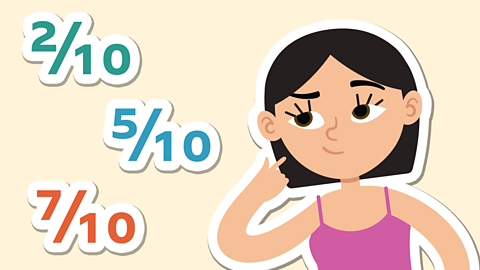Decimals and fractions
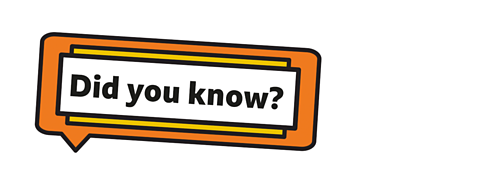
Decimals and fractions are related.
Just as fractions have equivalent fractions, decimals also have equivalent fractions.

It’s important to know and understand how to write decimals as fractions, because this helps us to understand the place value of the numbers.
Place value is very important when we’re converting decimals into fractions. You already refer to the place value names as fractions after the decimal point - Tenths and hundredths.
There is a simple method that you can follow to help you convert decimals into fractions.
Watch: Place value
Watch the video below to learn about place value for tenths and hundredths.
Example 1
Converting a number with one decimal point
Let’s take a look at how to convert 0.7 into a fraction.
Step 1: Put the decimal into the place value chart.
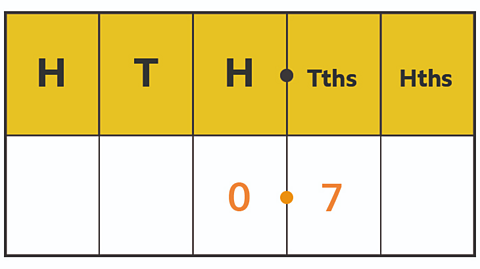
Step 2: From the place value chart, you can see which column the number ends in - the tenths column (Tths).
The denominator becomes 10. The numerator is the number after the decimal point. Therefore:
0.7 = <\( \frac{7}{10}\)
Example 2
Converting a number with two decimal places
How do you convert 0.91?
You can use the same method.
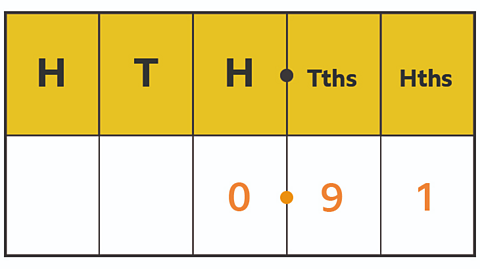
0.91 = <\( \frac{91}{100}\)
Example 3
Converting decimals which are more than 1
How do you convert 5.69 into a fraction?
Step 1: Put the number into the place value chart.
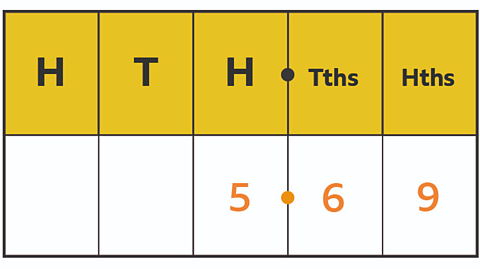
Step 2: Convert the numbers after the decimal point into a fraction.
Keep the 5 in the ones column as a whole number. This turns the fractions into a mixed number.
5.69 = \( 5 \frac{69}{100}\)
Activities
Quiz 1
Quiz 2
Play our fun maths game Guardians: Defenders of Mathematica. gamePlay our fun maths game Guardians: Defenders of Mathematica
Use your times tables and more maths skills to defeat monsters and reclaim the Kingdom of Mathematica

More on Fractions
Find out more by working through a topic
- count5 of 26

- count6 of 26
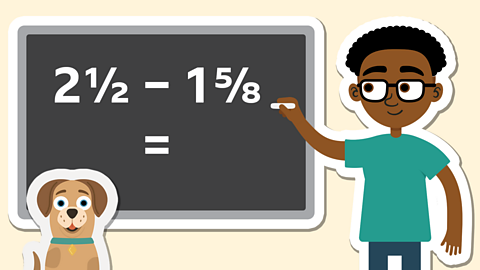
- count7 of 26
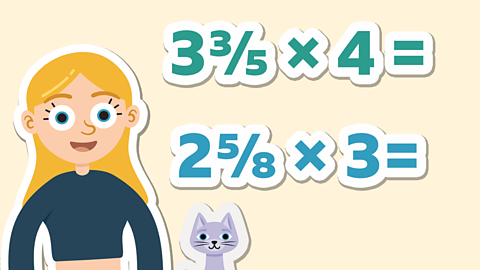
- count8 of 26
